
Contents









Korean Creator Beloved by China

Focus · Written by Yongkook Lee
Heart of K-Beauty
In addition to K-pop and K-dramas, K-beauty now commands global popularity thanks to Hallyu.
The so-called K-beauty boom cannot be explained merely by smooth skincare or extravagant makeup techniques.
What makes K-beauty so special? One reason is found in the small town of Osong-eup, Chungcheongbuk-do Province.
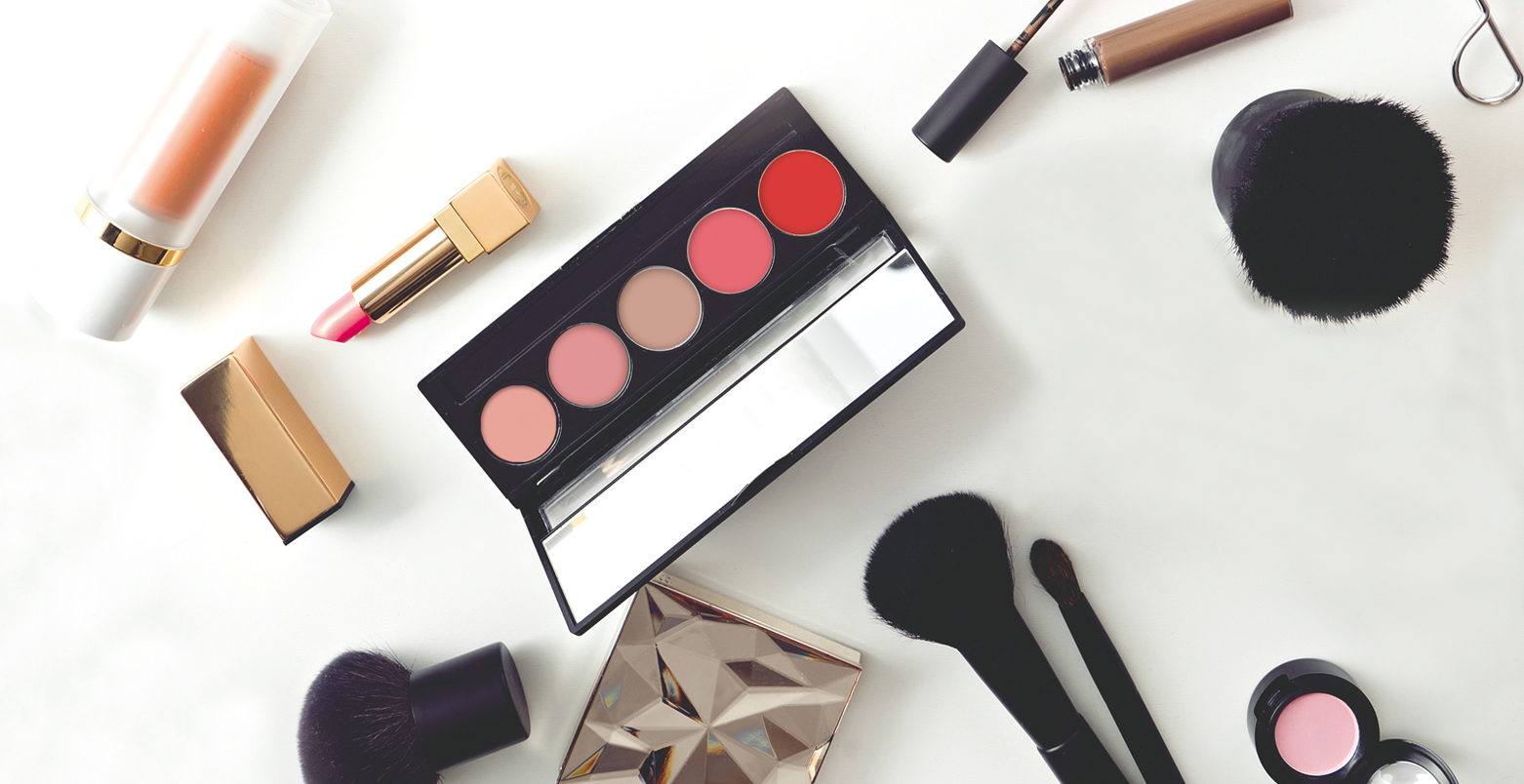
Osong was a quiet rice farming village until Korean cosmetics took the world by storm. Osong soon became the center of these changes by becoming the industrial center of Korean cosmetics.
Osong Station is the only station in Chungcheongbuk-do Province that KTX (Korean bullet train) stops at. The station used to be a temporary place for freight shipments in the past but now a regular passenger train to Chungbuk has been running since Novermber, 2010. Today, it is the closest KTX stop to Sejong, the multifunctional administrative city where government complexes and government agencies are located. Sejong’s BRT buses are currently connecting Sejong and Osong, making the trip between two cities much easier.
A lot of companies have begun to move their locations to Osong, and biopharmaceutical companies aggressively joined cosmetics development in the Osong Medical Innovation Complex built in 2010. Accessible to Seoul Metropolitan area and in proximity to the Korean Ministry of Food and Drug Safety for licensing and research centers provided by colleges and corporations, the situation was ripe to attract cosmetics companies and startups.
Osong BioValley was created under the Station Area Development Project and National Industrial Complex with 6 government agencies already relocated in Osong. On the left side of the station, Osong Biopolis is under construction. On the south side of the complex lies Gungpyeong-ri and on the southwest side is Osong-eup. Along the Gyeongbu High Speed Railway, Osong Speed Train Facility Office is located on the northwest side of the station. The Station Area Development Project will be carried out once again in Gungpyeong-ri area. As President Moon’s presidential campaign promises, Osong 3 Life Science National Industrial Complex is planning to be built in this area as well. With all the changes the region is experiencing, its importance in Korea is not exaggerated.
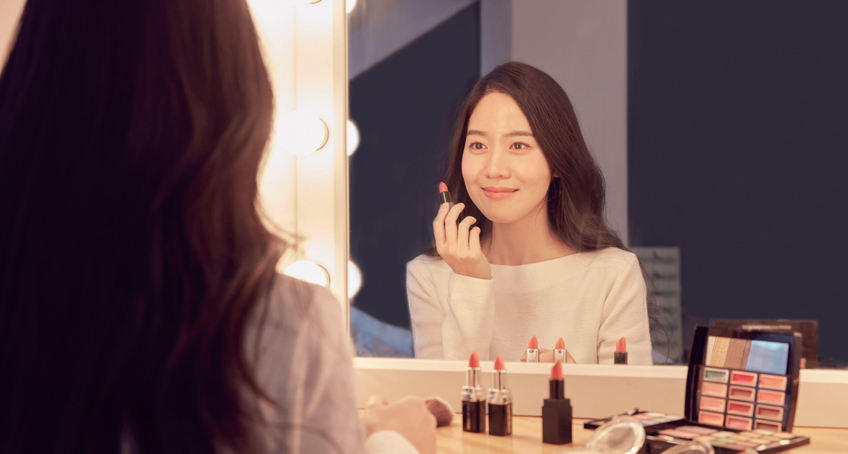
K-beauty has become a household name when it comes to Korean culture today. © imagetoday
Osong, Hub of K-Beauty
Osong is also known as the heart of both the Korean bio and cosmetics industries. Though a small province, Chungcheongbuk-do has a bio industry centered in Osong-eup ranked second in the nation in scale of production and personnel and third in volume of investment and exports. In addition, a third of all the cosmetics produced domestically are made in this province.
So how did Chungcheongbuk-do become a hub for the two industries despite being relatively small in both area and population with limited finances? One major advantage is that the province sits in the country’s geographic center. The nation’s largest bio-industrial complex, established in Osong-eup based on this advantage, houses 250 bio-related companies and think tanks and continues to expand.
Above all else, the manner in which Osong-eup’s cosmetics industry took off is impressive. Within a 20 km-radius Osong, with universities-industry collaboration cluster such as Sejong, Jincheon, and Ochang, gathered 100 factories of both large and medium-sized companies. The fact that the cluster was formed along the Central (Jungbu) Highway gave it a nickname “K-beauty belt.” Once as a small farming village, this area is serving as hub of the Korean cosmetics industry with a door wide open for the international market. This dramatic change is quite astonishing.
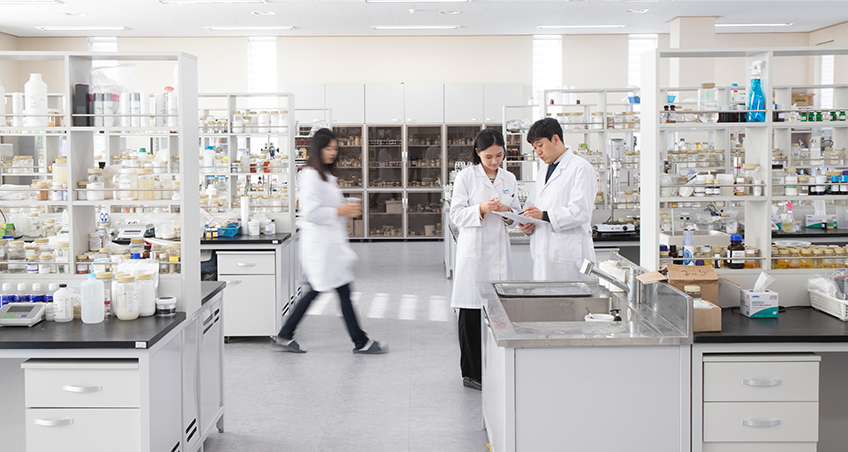
Behind all the great cosmetics products, endless efforts are made somewhere.
The support center for clinical research on cosmetics, the first of its kind in Korea, was opened there in 2017, and a cosmetics industrial complex covering 860,000 m2 will go online by 2023. Additionally, Cosmetics & Beauty Expo Osong Korea, one of Korea’s leading cosmetics trade shows, plays a key role in assisting the global expansion of K-beauty companies.
The size of the expo has been growing bigger every year, showing the interest of Korean and international companies. The expo showcases not only a wide range of cosmetics but also hair and nail products. Furthermore, it offers an opportunity for visitors to explore more in depth about cosmetics businesses including ingredients, packaging, or skin care devices.
There were 560 buyers visiting the expo in 2018, along with 2,491 teams who requested consulting for export. In result, more than 1,000 contracts were being discussed and among them 125 contracts were actually made, which was more than double last year’s performance. 80 percent of companies from last year are revisiting the expo this year and expected to show their passion. The Cosmetics & Beauty Expo Osong Korea in 2019 takes place for five days from Oct. 22 to 26 at Osong Station, free of charge for the entire exhibition.
 Being able to find the right colors for different skin shades is an important part of makeup. © imagetoday
Being able to find the right colors for different skin shades is an important part of makeup. © imagetoday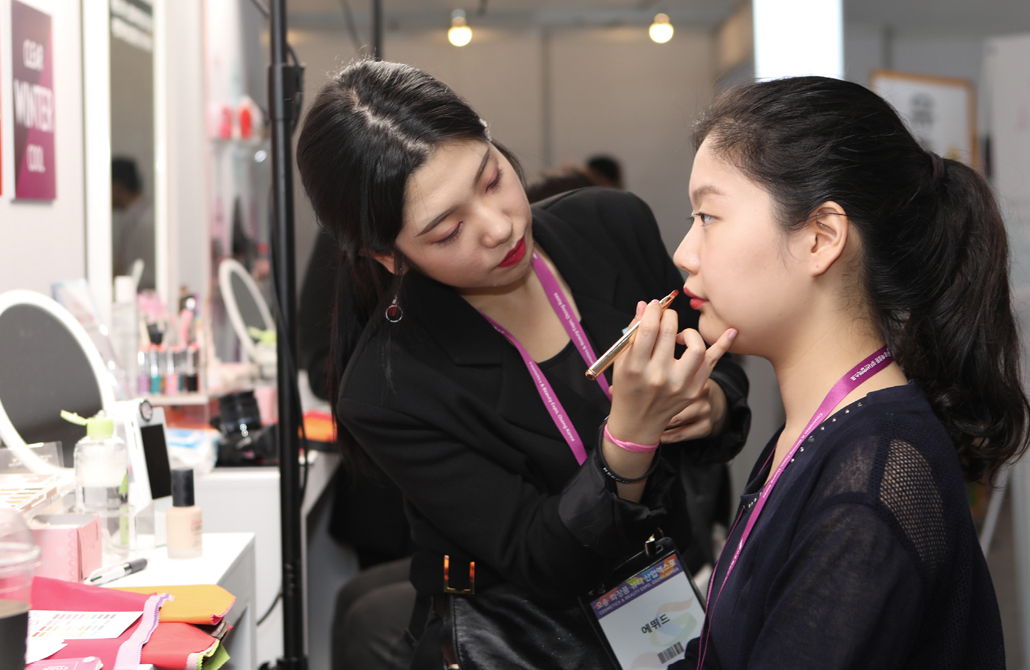 A makeup artist is putting makeup on a participant at a booth. © COSMETICS & BEAUTY EXPO. OSONG KOREA 2018
A makeup artist is putting makeup on a participant at a booth. © COSMETICS & BEAUTY EXPO. OSONG KOREA 2018Toward a Tech-Based World
Osong features many robust startups active on the global stage that compete on the world market thanks to their cutting-edge knowhow and product competitiveness.
A manufacturer of functional cosmetics using the highest level of nanotechnology has recently released cosmetics tailored to an individual’s genes, receiving a positive reception from its users.
A representative of a maker of world-class sheet masks based on an idea pulled from the production of medical substances cites quick responsiveness to global trends and disciplined and efficient management by Korean cosmetics supervisory authorities as the two strengths K-beauty has over its competition. Considering the characteristics of the cosmetics industry, many tasks are required to export products such as getting overseas certifications and registering trademarks. To this end, the provincial government of Chungcheongbuk-do offers comprehensive assistance from related training to administrative support.
Even late into the night, the R&D departments of many corporations keep working to explore and penetrate new markets abroad. The K-beauty companies based in Osong-eup aim to go beyond the Asian market, in which they are extremely popular, and enter the American and European markets, both of which are considered developed markets for cosmetics. Combining solid infrastructure, active investment from the central and local governments in Korea, and constant corporate efforts to create innovative products, it is no wonder why K-beauty is growingly popular abroad.
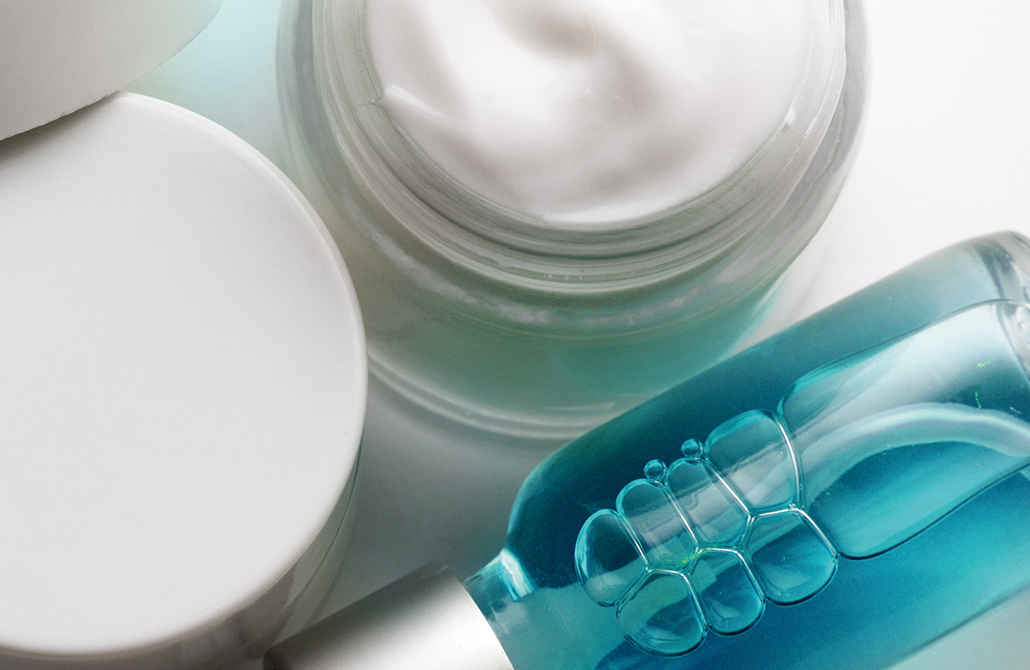
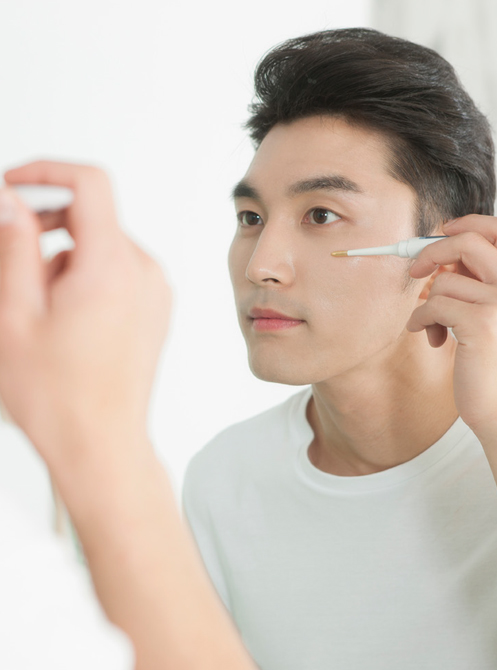
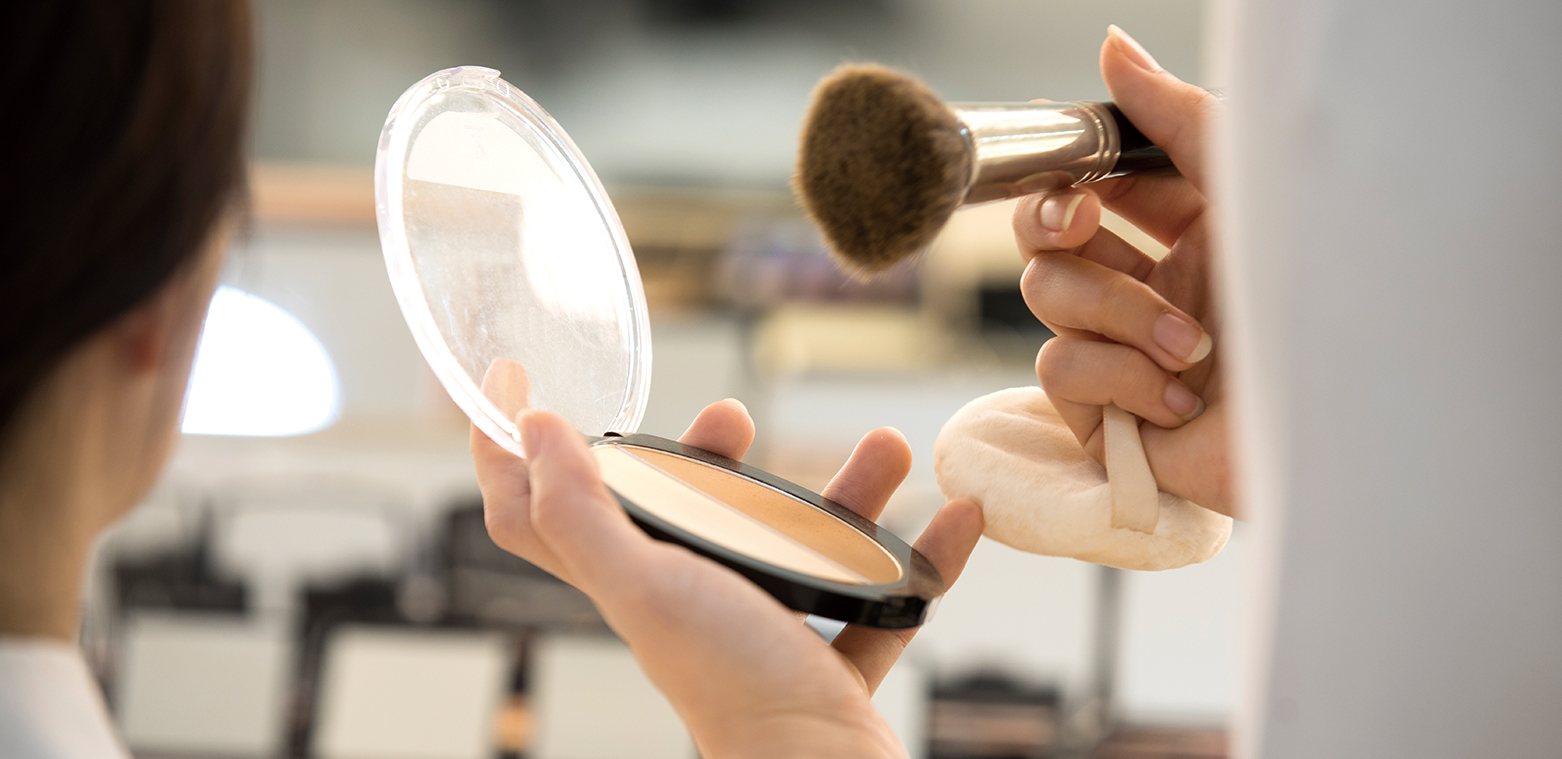
A variety of forms and ingredients to make cosmetics are constantly being developed. © shutterstock / As men become more interested in beauty, male makeup product market is substantially growing. © imagetoday
K-beauty not only means great makeup products and tools but beauty expert’s knowhow to satisfy consumer’s demands. © imagetoday
Other Articles



Doribaengbaengi






Korean Creator Beloved by China






